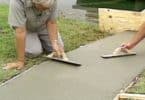Is it time to rip out that old pool and finally release yourself from annual maintenance? Is there a leak in the pool lining that cannot be addressed without lowering the water level? Is the pool level just a little too high after a big thunder storm?
There are literally hundreds of situations pool owners will encounter that will call for at least partial draining of their pool. Luckily, lowering the water level of a standard pool is far less of a headache than is commonly perceived – and it doesn’t involve scooping water out one bucket at a time.
For approximately 40 dollars, this simple guide will take you from pool-level-A to pool-level-B in an afternoon.
The process:
Contents
Step 1: Acquire a pump.
Take a quick ride to the local hardware store – most will have a service available that will allow you to rent a submersible sump pump. The Home Depot will always have this service. The rental will cost somewhere in the ballpark of 35-45 dollars for 24 hours, so it would be advisable to rent the pump early in the day. No one wants to drain a pool after dark. The rental should include 50 feet of fire hose, and more is generally available upon request. 100 feet is advisable. If you have a handyman friend, or if you know a fellow pool owner, the odds are one will be handy to borrow.
Step 2: Lower the pump.
Make sure the hose is attached properly to the pump before placing it in the water or plugging it in. If you plan to drain a pool with varied depths, you should place the pump in the deep end to prevent it from land-locking itself.
Step 3: Drain the pool.
Before turning the pump on, make sure your hose is directing the water towards your sewer access. In most backyards, there is a 3-4 inch pipe that is covered with a cap. This is where you want the water directed, as your city can reuse this water. Turn the pump on, and water will begin draining your pool at a snappy rate of 50 gallons/min. For most pools, a complete drain will take 2-4 hours.
Step 4: Cleaning the pool.
If you drained your pool for the purpose of demolition, you are done draining your pool and don’t need to worry about cleaning.
As the water level drops, spray the sides of the pool with water to eliminate any sticks, bugs, or common debris. You can do this at the end, but then you are stuck manually removing water from the bottom of your pool.
When the water is entirely drained, you can proceed to blast the bottom of your pool with the hose. If desired, you can purchase a special pool lining cleaning agent from your local pool supply shop.
Most pools have a brown calcium ring around the perimeter of the pool near the water level. CLR is a great choice to remove this ugly line.
Step 5: Patching the pool.
If you have any holes in your pool’s lining, patch them. Patching is quick and easy on most liners, and supplies are generally cheap.
Step 6: Refilling the pool.
Now that your pool is finally empty and finally clean and repaired, it’s time to bury all of your work under thousands of gallons of water. This takes a good deal of time, and the most common route is to leave a hose in the pool. An average sized, 10,000 gallon pool will take about 14 hours to fill completely via hose. Enjoy your clean pool!
<>







